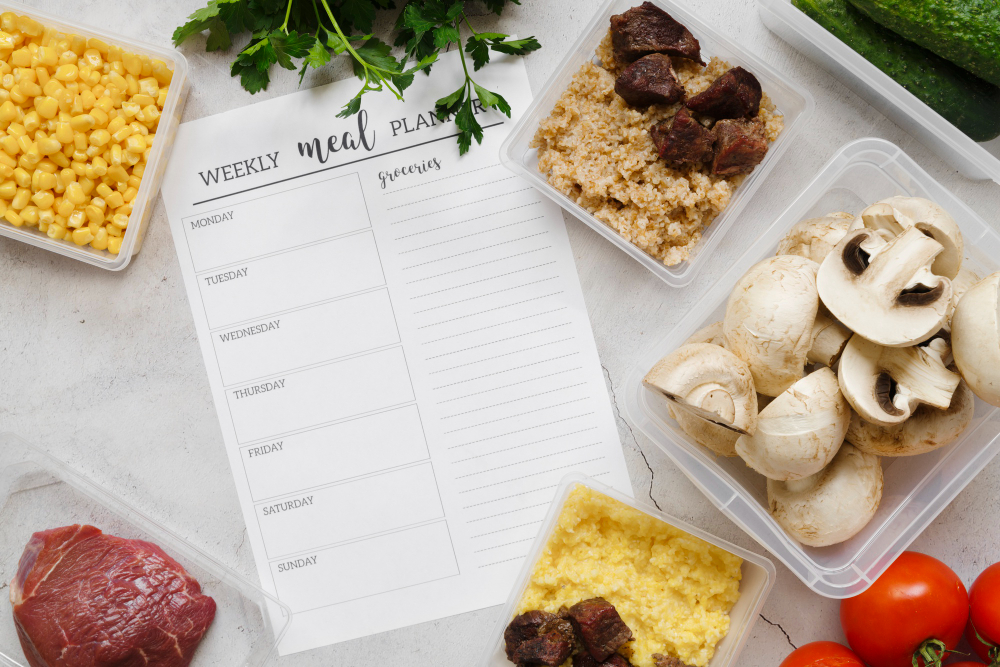Budgeting for Groceries as a Student in Australia
With the cost of living always hitting the news, people across Australia are looking to sort out their finances and budget more than ever.
As a student, balancing your finances can be tricky, and groceries are often one of the largest expenses. Using a budget of $200 per month, Here’s how you can eat well and save money by planning carefully and shopping smart.
Moving soon? Connect utilities today
Get connectedSet a Monthly Budget & Stick to a List
A $200 grocery budget gives you about $50 per week. Break it down into categories like fresh produce, proteins, and staples to manage your spending. This helps you prioritise essential items and avoid overspending on your grocery bill (or opting for takeaway).
One of the easiest ways to break down the categories is by meal planning within your student budget. Outline your meals for the week and create a shopping list based on the ingredients you need. Apps like Mealime can make this process easier. Sticking to your list prevents impulse purchases and ensures you only buy what you’ll use.

Shop Smart
The phrase “work smarter, not harder” is the mantra you’ll need to grocery shop on a budget! For starters, opt to shop at more affordable stores. ALDI offers lower prices on many staples compared to the largest supermarkets in Australia (Coles or Woolworths). Local farmers’ markets are also great for fresh, seasonal produce if you can find one nearby for more healthy eating over processed foods.
Be sure to keep an eye out for sales and discounts too, taking advantage of weekly specials where you can. If you do decide to shop at a larger supermarket chain, sign up for loyalty programs like Woolworths Rewards or Coles Flybuys to earn points and discounts over time to stay cost-effective.
Lastly, consider opting for store-brand products, as they’re often just as good as the big Australian name brands and significantly cheaper than their branded counterparts.
Embrace Simple Meals & Minimal Waste
As appealing as it is to try and recreate your favourite Masterchef meals, focus on recipes that are easy to make and use inexpensive ingredients, such as pasta dishes, stir-fries, soups, and rice bowls. Consider incorporating plant-based meals using lentils, beans, and tofu to cut back on the cost of meat.
Another nasty surprise is food waste can quickly eat into your budget. Store perishables properly, use leftovers creatively, and freeze items you won’t use immediately. Batch cooking (meal plan) is another great way to make your groceries go further, as long as you don’t get bored of having the same meal several times throughout the week!

Sample $200 Monthly Grocery Breakdown
• Staples (rice, pasta, canned goods): $30
• Proteins (eggs, tofu, occasional meat): $40
• Fresh Produce (fresh fruits, veggies): $50
• Dairy/Alternatives (milk, cheese): $20
• Snacks (nuts, treats): $20
• Frozen Goods (vegetables, bread): $25
• Miscellaneous (spices, condiments): $15
Quick Tips
Everyone has their own methods of budgeting for a grocery list, but here are a couple of additional tips you can take to heart for your next trip to the grocery store.
- Shop Seasonally: Seasonal produce is fresher, cheaper, and often more nutritious.
- Avoid Shopping When Hungry: A full stomach helps you avoid costly impulse buys.
- Track Spending: Monitor your grocery expenses weekly to ensure you stay within your budget.
- Student Discounts: StudentEdge provides great discounts for shopping, so be sure to take advantage while you can!
With these tips, you can stick to a $200 monthly food budget while enjoying balanced and nutritious meals. It just takes a bit of planning and mindful shopping to make it happen. You’ve got this!



 Justyn Harrison
Justyn Harrison 






